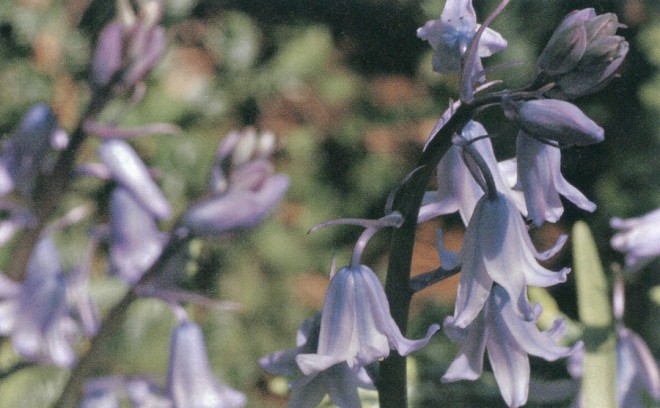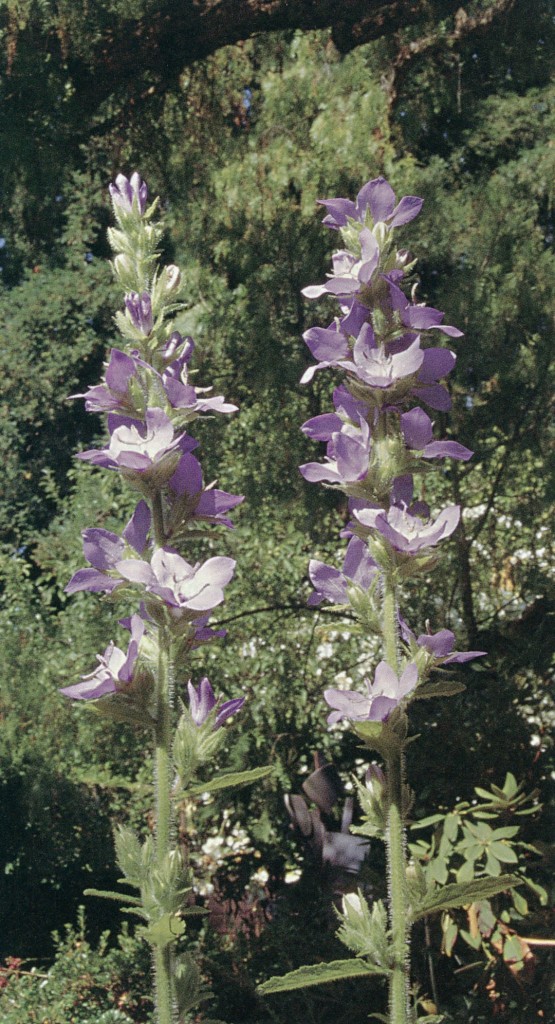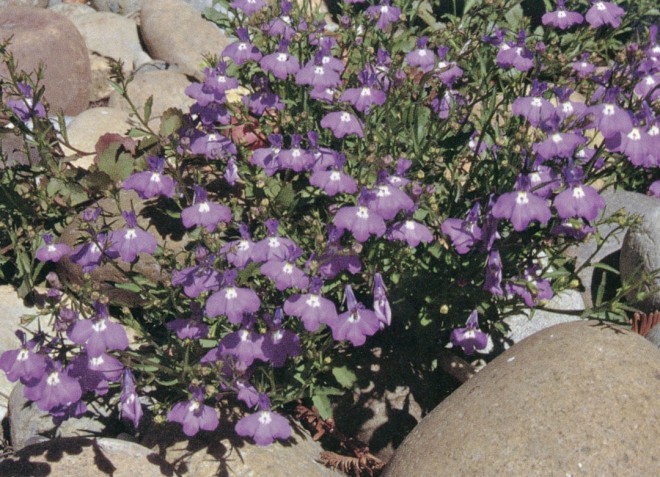

Contributor
It is a fine thing to have a new plot of ground to garden. It stirs the imagination, encourages the mind to dream of structure, promises a flowering Eden of one’s own, and finally sends the new gardener out with plan, trowel, and full‑blown hubris to bend nature to his will. Those of us who were lucky enough to find such a new plot may also have found an important corollary: nature in the garden does not take kindly to being bent. Not that she takes any stubborn stance against us, she simply takes her own time (she has plenty), and slowly, in minor increments, lets us know that, although the gardener may propose, the garden disposes.
Some years ago, I acquired a new home, a new space to garden. The previous owners had let the half‑acre place run to a jungle of pyracantha, aging apricot trees, a patch of Bermuda grass, and a paved badminton court. I was young enough to glory in the challenge and inexperienced enough to be confident that I could meet it. I was new to gardening. Previously I had been a weekend gardener. The small suburban lot that I tended was notable for being low maintenance. I congratulated myself on its success; I could indeed manage it in less than half a day a week. But it was really not much of a garden: juniper out front, lawn around the house, a few shrubs, and—daringly—a pomegranate and a persimmon.
But now my situation was different. I had more time and I had begun attending the meetings of the local horticultural society. I was much impressed with the expertise of the speakers, and, though I knew I could never equal them in horticultural knowledge, I did have an eye for form and an appreciation of natural beauty that I was sure would stand me in good stead. I would make myself a garden, one that would be acceptable to these new expert acquaintances. What began as a challenge soon developed into a near obsession; that is, I became a gardener.
Starting Outcam
I think my first influence must have been Thomas Church, one of the twentieth century’s most important landscape architects. He was strong on structure in the garden. It is said that he had been influenced by the Cubists. Be that as it may, I could see the value of geometry when laying out a garden design. (In school, I had excelled in geometry, though failed miserably in algebra.) I did not try to imitate any of Church’s designs, but I instinctively knew that structure was what I wanted. I laid out walks, raised beds, brick‑paved patios, a firepit. Plants? They would come later. But first, I must rip out all the wild growth so that a new beginning could be made. I still bear the scars of my battle with the pyracantha. Twelve-foot tall, thorny spears challenged me in daily jousts. I won, but at a cost.
Today, as I go for my morning walks in the neighborhood I see that all the new mansions have their landscape professionally done. It would never have occurred to me to do so, though I might have been less bloodied. I may someday employ a maintenance crew, but at the time, I needed to be involved in each detail, from clearing brush and amending soil to planning, choosing, and planting. The place could only be my own if I felt the soil between my fingers, the spade underfoot. I had to employ others to have the badminton court removed and carted away, but reclaiming the soil underneath was my affair. Yards and yards of redwood shavings were left for me to till into the earth. I did not attempt new concrete work, but the garden became what it did, for the most part, through my own will and muscle . . . for better or worse.
And so the garden began. It did not spring full-grown—like Jove—from my forehead. There were beginnings, false starts, deaths. Today, while rooting around in the garden, I sometimes come upon an ancient tag for some plant that I had thought would be just the thing for that spot and that now is only an indistinct memory. But mostly, in those early days, my main concern was to make the garden my own, to set my imprimatur on each and every aspect of it. I expected that nature would take the hindmost role in the development of my garden.

Early Successes and Subtle Changes
In the short run I was successful. There was form and order, flower and fragrance, and some slight applause from other gardeners. But gardens will not stay put. They will grow—or not. Shrubs, so carefully arranged by desired heights into an appealing landscape composition, will take off with little care for the predictions of the garden books, making a higgledy-piggledy mess of things. A fine clump of bamboo will suddenly, after decades of making a feathery backdrop for the garden, decide to flower and then, of course, to die, leaving a sad hole in the landscape.
At first I accepted these occurrences as minor accidents. Of course, not all plants will do well; something in their genetic make-up, I thought. But then I began to wonder: was my garden inhabited by some Stephen King creature, unseen by me but active in silent, malevolent opposition? I could hardly think so. But I would redouble my efforts with more research, more care, more involvement. My determination to impose my will on the garden was only strengthened by the opposition. The years passed. I had my successes. The garden grew, but somehow, never exactly as I had planned. And slowly, slowly, I began to accept a new possibility, a new approach. What if I withdrew my iron fist, softened my determination, let nature have more of a say? Would my garden become a jungle, or just slightly different—but possibly better?
In the beginning, I had inherited a clump or so of Spanish bluebells, (Hyacinthoides hispanica). In spring, without prompting, they would suddenly produce a pretty spray of blue over shiny strap leaves, very satisfactory to the eye. But as the years passed, new clumps would appear in areas completely disconnected from the original ones. At first I objected. That spot was reserved for something else. But I had to admit that the flowers brightened the spring, demanding no care, and the foliage was small enough to fade away gracefully. I began to look forward to their season, to see where new clumps might appear. I have seldom found any reason to remove the many volunteers—and every reason to appreciate them.

The sturdy stalks and lavender blue flowers of Campanula primulifolia were perfectly suited to a particular spot in a particular bed, filling out a favorite design of mine. But why did it appear so willfully anywhere and almost everywhere? At first I resented its roving ways, but then I found roguing it out a chore hardly worth the effort. It was an attractive plant, indestructible, dependable; perhaps I would just let it find its own way into the garden design. I withdrew my objections and, with a certain bemusement, let it surprise me with its wandering ways.
I don’t know when forget-me-nots (Myosotis sylvatica) first appeared in my garden, but there they are every spring, rioting around in spaces supposedly reserved for more sophisticated flowers. Should I have been fierce with them, promulgating banishment or death by Roundup? I see now that I must have been weakening in my immigration policies quite early. Can I confess that I like them? That they cheer me as a happy harbinger of spring? And they express an undoubted affection for me when, after their bloom, I pull them up and take them off to be composted; that is, they attach their seeds lovingly to my clothes, determined to go with me everywhere. Could I reject such devotion?
My garden seemed to grow in confidence over the years. As it saw me weakening over common intruders, it challenged me to try something more permanent. I had seen a wonderful garden of dwarf conifers in New Zealand; surely I could have something like that. As with all my horticultural enthusiasms, I bought books and studied catalogs, determined which area should have such and such plants, all to be beautifully arranged by height and texture into a harmonious whole. I was successful, but it was not easily done. I began by choosing specimens from well-illustrated books and scouring local nurseries to select the best of those chosen. It seemed the likeliest approach until I discovered the dearth of dwarf conifers that even the best nurseries offered.
Eventually, I reversed the process and went to the nurseries first and chose from what was available. My garden suffered little from my limited selections. I could still achieve the desired arrangement of shapes and textures. Over the years, however, I learned that “dwarf” is a relative term. Compared to my stand of coast redwoods, the chosen conifers were indeed dwarf, but they had not read their descriptions in the books and began to exhibit signs of ambition, clearly wishing to grow above their station. Their change was slow, but grow they did. Chamaecyperus pisifera ‘Filifera Nana’, for instance, was never meant to be eight feet tall (nana?). I was faced with a dilemma: should I hold to my original design and replace these steroidal specimens with more demure ones, or should I simply find something to admire in what they had accomplished?
Adapting to a Superior Wisdom
Here I began to detect a change in my attitude toward my garden. I did admire the once dwarf conifers, and, were I to place a dollar value on them, it would be significant. It would be considerable work to replace these fine healthy plants. Could I learn to like them instead? Grandly, I decided to permit the group of conifers to remain, using them for my own design purposes, specifically as a screen for a small terrace designed for taking tea in the afternoon.
The door had been opened. Slowly I had to admit that I was no longer in charge, and my new permissive self began to emerge. Oh, I would still plant and water and prune and fertilize, acting the gardener as before, but there were signs. I had once tucked in some creeping mint (Mentha requienii) among paving stones around a sundial, together with a creeping thyme (Thymus serpyllum). The mint proved too shy against the more aggressive thyme and was overrun and disappeared. So what was it doing some twenty feet away thriving in the cracks of a brick path? My first impulse was to tidy it away, but as I ran my hand over it and its fragrance rose, I knew I was defeated again. How pleasant it would be for guests to bring this fragrance with them when they arrived at the front door, or so I assured myself; in reality, I simply liked the softening effect the mint had on the bricks and its delightful fragrance. Both effects had been achieved with little help or direction from me.

I have a fair amount of brick paving around the house, most consisting of old sand-mold bricks no longer available, laid in a woven pattern, set in sand, without mortar. I had had no idea the small cracks between the bricks would be so attractive to windblown seeds of all kinds. I knew lobelia (Lobelia erinus) as a plant to be bought in six-packs and replaced every year. I enjoyed their various blue hues along the borders but never noticed any seed heads in the fall. Nevertheless, each spring, seedlings sprouted among the nearby bricks and between round river stones intended as a base for a piece of sculpture. I knew they did not belong there and removed some of them, but ultimately, I found their persistence charming. Some of the plant volunteers I reward with my approval, and they reward me in return.
Color in the garden is always a matter of concern. We strive for coordinated color schemes, but sometimes there are surprises. I once put in some bulbs of Sparaxis tricolor in mixed colors in the front garden. They did well, though the orange varieties achieved dominance, edging out most of the others. Then a friend offered me a healthy plant of Geranium maderense. I could seldom resist a free plant, especially from a respected gardener, so I gladly accepted the gift and planted it in an open pocket in the front garden, not knowing much about it. Since this species is a biennial, the first year I had a large splashy foliage plant that I admired. The geranium flowered in the following spring, and at just the same time as the nearby sparaxis. Orange can be a problem color in the garden, but when it appears cheek by jowl with a large flush of bright magenta, it gives one pause. I regarded the two with some concern at first. Which should go? But I really liked both of them. Could I find something desirable in their peculiar color combination? I could. I would not be bound by conventional notions of color in the garden. If my garden could, all on its own, produce such a striking effect, I could accept its superior wisdom. Besides, the sparaxis was soon out of bloom, whereas the geranium continued into summer.
You see, of course, what had happened to me over the years. I had begun with notions of forcing my ideas of form and color onto a design for my garden; little by little, I had had to accept the superior wisdom of that living entity, my garden. Now, I stroll along my garden walks, pausing here and there to remove a squirrel‑planted oak tree or a wind‑blown weed, pruning a bit where necessary, dead-heading, doing the usual garden things, but also enjoying a new relationship with my garden. I have come to respect it and its own determinations—even to admire them. It’s a happier relationship, as I have become a contented, more permissive gardener.
Share:
Social Media
Garden Futurist Podcast
Most Popular
Videos
Topics
Related Posts

Low Maintenance Gardens – Better for Pollinators and People
Autumn 2022 “I come out every day. It’s therapy, my meditation.” Janet’s young garden transformed from overgrown, invasive plants to mostly natives. The dailiness of

Calochortophilia: A Californian’s Love Affair with a Genus
Summer 2022 I can chart the progression of my life by Calochortus. For the last two decades, at least. As a teenage girl growing up

Pacific Plant People: Carol Bornstein
Spring 2022 Public gardens play a key role in demonstrating naturalistic planting design, selecting native and adapted plants for habitat, and testing techniques for reducing

Add Year-Round Interest and Winter Blooms for Pollinators
Spring 2022 This article was created from an Interview by Merrill Jensen with Neil Bell in the Summer of 2021 for our Pacific Plant People









Responses